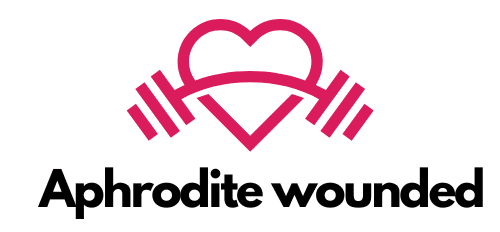Can Participation in Community Science Projects Boost Environmental Awareness and Health?

Community science, a transformative approach where citizens engage directly with scientific practices, is gaining traction globally. Through the participatory model, it can empower citizens to partake in projects that address local environmental and health issues. By involving the community in data collection and interpretation, it allows for a diversity of knowledge and perspectives. Nonetheless, the question remains – can participating in community science projects indeed enhance environmental awareness and health?
Connecting Science and Community through Participatory Projects
Community science bridges the gap between communities and scientific research. It encourages citizens, students, and scholars alike to participate in projects that directly impact their environment. For instance, a local school could initiate a project to study the species inhabiting their neighborhood. In doing so, students not only gain hands-on scientific experience but also cultivate a deeper understanding of their local environment.
A découvrir également : What Are the Benefits of Infrared Sauna Therapy for Detoxification and Relaxation?
This participatory model is based on the belief that everyone can contribute to scientific knowledge. It does not limit participation to individuals with academic credentials but instead welcomes involvement from the entire community. This way, community science helps democratize science, making it more accessible and relevant to ordinary citizens.
The Role of Technology in Facilitating Community Science
In today’s digital world, technology plays a crucial role in facilitating community science. Platforms such as Google Scholar provide access to a vast array of scientific resources. They can help participants retrieve data, locate relevant research, and even publish their own findings.
A lire également : How Does the Regular Practice of Shinrin-Yoku (Forest Bathing) Affect Immune System Function?
Moreover, technology can streamline data collection and analysis. For instance, participants can use mobile applications to conduct surveys, record observations, and share data with the project team. Such tools not only make the process more efficient but also enable participants to engage with science in a more concrete and meaningful way.
Community Science: A Powerful Tool for Environmental Awareness
Community science can play a pivotal role in enhancing environmental awareness. Since the projects are often localized, participants gain an intimate understanding of their local environment. They learn about the species that inhabit their community, the challenges they face, and the role humans play in this complex ecosystem.
Moreover, when participants are involved in the process of data collection and interpretation, they are likely to develop a deeper understanding of environmental issues. By seeing firsthand the impact of human activities on the environment, participants can appreciate the urgency of environmental conservation. Consequently, community science projects can serve as a powerful tool for promoting environmental stewardship.
Fostering Health Consciousness through Community Science
Just as community science can boost environmental awareness, it can also promote health consciousness. Health-based projects can involve participants in studying the impact of environmental factors on community health. For example, a project could investigate the association between air quality and respiratory health in a specific neighborhood.
Such projects enable participants to understand the intricate link between the environment and health. They can learn about potential health risks in their community and devise strategies to mitigate them. More importantly, these projects can empower the community to advocate for health-conscious policies and practices. They provide the knowledge and evidence needed to lobby for better health conditions at the local level.
Building a Community of Scientifically Engaged Citizens
Through participation in community science projects, ordinary citizens can become scientifically literified individuals. They are no longer passive consumers of scientific knowledge, but active contributors to it. Community science can thus cultivate a community of scientifically engaged citizens – individuals who are knowledgeable, critically thinking, and proactive in addressing environmental and health issues.
Furthermore, community science can foster social cohesion. By working together on a shared project, community members can strengthen their bonds. They can learn to appreciate the diversity of knowledge and experiences within their community. In this way, community science can transform not only the way we engage with science but also how we relate to our community and environment.
Citizen Scientists: Impact on Climate Change and Air Pollution
Citizen scientists are at the forefront of the fight against climate change and air pollution. In the United States and around the world, numerous community science projects are tackling these critical issues. They are inviting ordinary citizens to collect data, interpret findings, and contribute to the global understanding of these environmental threats.
A high school, for example, might launch a science project to monitor air quality in its immediate environment. Using simple, open-access tools, students can record and analyze data on air pollution levels. They can then compare their findings with local health records to understand how air quality affects respiratory illnesses in their community.
Such projects facilitate a hands-on understanding of the impacts of climate change and air pollution. By directly engaging with these issues, participants can appreciate their severity and urgency. They often emerge from these projects with a heightened sense of environmental responsibility, ready to make lifestyle changes and advocate for sustainable policies.
Moreover, the data collected by citizen scientists can complement mainstream research. As they often live within the areas they study, they can provide unique, localized insights that professional scientists might miss. Thus, citizen scientists can contribute valuable data to the broader scientific community, advancing our collective efforts to mitigate climate change and air pollution.
Concluding Remarks: Lessons Learned and the Way Forward
Community science projects have shown significant promise in boosting environmental awareness and health consciousness. They have empowered citizens to engage directly with science, transforming them from passive consumers to active participants in scientific inquiry. These projects have also fostered a deeper understanding of local environmental and public health issues, encouraging communities to take proactive measures to address them.
However, there is still much work to be done. While technology has facilitated data collection and analysis, access to such technologies and the necessary training remains uneven. Also, efforts must be made to ensure that scientific findings from these projects are openly accessible and effectively communicated to policymakers and the wider public.
Moving forward, schools, local organizations, and government agencies should continue to promote and support community science programs. These programs not only enrich scientific knowledge but also foster a sense of communal responsibility and cohesion. By encouraging ordinary citizens to become citizen scientists, we can build a scientifically literate populace ready to face the environmental and health challenges of the 21st century.
In conclusion, community science offers a powerful, participatory action model for fostering environmental and health awareness. By actively involving community members in scientific projects, we can democratize science, making it accessible, relevant, and transformative. The lessons learned from current projects underscore the potential of community science to build a better, healthier, and more sustainable future for all.
